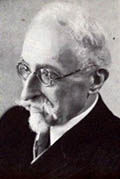Parapsychology
Although history is riddled with references to hauntings, clairvoyants, seers, and psychic phenomena, the true riddle of parapsychology is the scientist’s ability to establish proof of the super normal powers of the human mind. The mainstream scientific community remains skeptical of parapsychology and continues to categorize it as a “fringe” or pseudoscience.
Yet, belief in parapsychological phenomena has spanned the ages.
- The Christian Bible contains several references to ghosts and spirits. In one instance, King Saul consulted a psychic to receive advice from the dead, Samuel. (1 Samuel 28:7-19).
- Nostradamus (1503-1566) served as a seer to Henri II of France and his queen consort, Catherine de Médicis. Even today his prophecies remain popular and many enthusiasts credit him with predicting numerous events in world history.5
- Today, as much as 50% of the American population holds a belief in ESP.6

Although the word parapsychology was first used as early as 1653, it didn’t come into popular use until it was coined by psychologist Max Dessoir in the late 1800s. Serious parapsychological research began in the late 19th century, springing from the growth of the Spiritualist Movement.7
In 1882, the Society of Psychical Research was established in London. In the 1930s, the term parapsychology replaced the term psychical research when it was adopted by researcher J.B. Rhine. In 1957, at a workshop held at the Parapsychology Laboratory of Duke University, Rhine proposed the formation of an international professional society, the Parapsychological Association (PA). The objective of the PA is to “advance parapsychology as a science, to disseminate knowledge of the field, and to integrate the findings with those of other branches of science."
Parapsychological research employs several methods of searching for proof of psychic phenomena that includes both laboratory research and fieldwork. Perhaps one of the most interesting and well-known parapsychological studies originated from the Ganzfeld Experiments.
In a Ganzfeld experiment, a receiver is isolated in one room. A sender concentrates on a variety of objects, such as numbered cards or photographs or, more recently, a random video clip. After 30 minutes of concentration, the receiver is shown four of the objects and asked to choose the one that most fits the mental images he received from the sender. The probability of a guess being accurate is 25%. If the receiver chooses the correct object over 30% of the time, it is considered proof of the parapsychological phenomenon of ESP.1
2. "Parapsychology FAQ." Parapsychological Association. 28 February 2008. Parapsychological Association. 13 Mar 2008 <http://www.parapsych.org/faq_file1.html#4>.
3. "Parapsychology." Encyclopedia of Psychology. 2nd ed. Ed. Bonnie R. Strickland. Gale Group, Inc., 2001. eNotes.com. 2006. 13 Mar, 2008 <http://www.enotes.com/gale-psychology-encyclopedia/parapsychology>
4. Douglas Harper. November 2001. Online Etymology Dictionary. 17 March 2008.<http://www.etymonline.com/index.php?search=psychology&searchmode=none>
5. Nostradamus. 4 March 2008 Wikimedia Foundation, Inc. 17 March 2008 <http://en.wikipedia.org/wiki/Nostradamus>
6. Melissa Pollak. "Belief in Paranormal Phenomena Is Unscientific." Opposing Viewpoints: Paranormal, The. Ed. Mary E. Williams. San Diego: Greenhaven Press, 2002. August 2004. 4 March 2008. <http://www.enotes.com/paranormal-article/42907>.
7. "The History of Ghost and Spirits". Think Quest Library. August 2005. Oracle Education Foundation. 17 March 2008. http://library.thinkquest.org/05aug/00689/Pages/historyghosts.html
